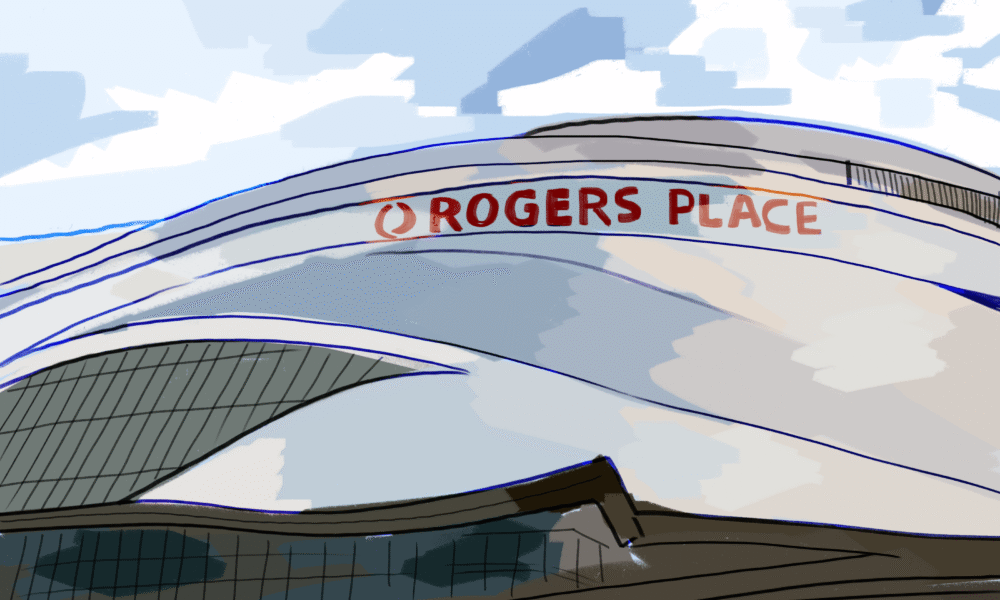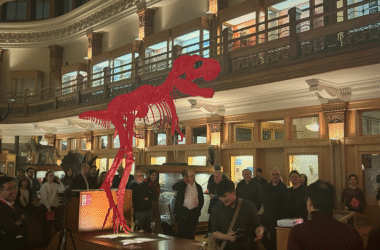The creation of public sports infrastructure often sparks excitement, as many view these projects as symbols of progress and cultural pride. Yet few consider how such developments impact marginalized populations, notably Indigenous communities. A study in the International Journal of Urban and Regional Research examining Rogers Place—Edmonton’s $613.7 million CAD publicly financed hockey arena—challenges the belief that sport-related urban development projects offer community-wide benefits.
Before opening in 2016 on Treaty 6 territory, the site was home to a significant Indigenous urban street community and several non-profit social service agencies. Following the arena’s creation, residents were evicted as subsidized apartment complexes and community hubs were replaced with upmarket housing. Thus, between 2016 and 2018, Jordan Koch—associate professor in McGill’s Department of Kinesiology and Physical Education—worked alongside researchers Jay Scherer and Rylan Kafara from the University of Alberta to conduct community-based research documenting the arena’s impact on Indigenous and unhoused residents.
Koch told The Tribune in an interview that the project began after he and his colleagues witnessed residents being displaced and losing access to local social services, including the harm reduction facility known as The Hub.
“The three of us had this longstanding relationship in this community, and we just witnessed firsthand what was happening,” he said. “This sort of thriving community being displaced, […] often aggressively, violently, and we were kind of at a loss for what to do, so we started doing what researchers do, research it […], [and] trumpet stories that we thought were underrepresented.”
The researchers interviewed 34 city centre residents, 20 frontline staff at The Hub, and 8 managers from several non-profit agencies. They also spoke with 30 city centre residents via Homeless Connect events and unhoused individuals at three facilities outside the urban core, and conducted ethnographic observations during 40 National Hockey League (NHL) game nights.
Throughout their interviews, the researchers identified three recurring themes. The first is that the increase of racialized policing and carceral redlining—systemic social control through discriminatory policing and incarceration practices specifically targeting racialized communities—increased stress and anxiety among participants. Police and private security increased surveillance, issued fines, and used other aggressive policing measures to displace Indigenous and unhoused residents to create a “comfortable” environment for hockey fans on event nights.
Koch recalls witnessing this directly during his ethnographic observations.
“An hour before the game, […] police were sort of clearing the corridors [and] that would lead the traffic to and from the arena. [There was] this physical cleansing of the space to kind of make it a more enjoyable experience for the fans.”
Koch also shared that a South Edmonton police officer explained to him how individuals displaced from downtown relocated south. However, limited services forced police to return them downtown and then bring them back to the south on game nights, adding to this nauseating feeling of continuous displacement.
The second common theme among residents was anger and sadness over the loss of safe community spaces. Developers destroyed dead zones in the city, such as parking lots, which often served as shared homeplaces.
The last theme the study found was that city centre residents desired to remain on Indigenous land and retain access to The Hub, viewing it as a sacred space amid ongoing colonial violence against Indigenous Peoples.
“The community has been widely displaced. Yet there was still this hope and sense of home that I thought was really important. So that, to me, was what was kind of the most surprising,” Koch said. “People’s connectedness to that space, to that land, and to each other.”
The study notes that in 2021, the Katz Group purchased The Hub, and the Edmonton Oilers Community Foundation allocated $10 million CAD to relocate it two blocks away from Rogers Place. On Sept. 30, 2023, The Hub closed, and at least 120 city centre residents have since died amid ongoing housing and drug crises.
Ultimately, this study shows that sport-driven development often fails to provide community-wide benefits and instead reflects settler colonialism in its displacement of racialized communities for the benefit of urban elites. Indigenous resilience and connection to land emphasize that urban spaces are home to many communities, which is why ethical and inclusive planning is vital when constructing sport arenas in Edmonton, Montreal, and beyond.






